Finally a model showed guts, true guts.
Bethany Townsend recently went public with her colostomy bag. Far beyond the usual exercise in vanity that is the selfie, she revealed to the world the most intimate damages of illness, by posting pictures of herself in a bikini to the Crohn's and Colitis UK Facebook page.
At last count the pictures have been seen by more than 12.4 million people, and have spurred the #GetYourBellyOut campaign with countless sufferers posting colostomy-selfies to all forms of social media.
Having spent two years with my own colostomy -- also the result of inflammatory bowel disease -- my admiration for Townsend's bravery was tempered by a nagging feeling that flooding the Internet with colostomies was only slightly better than posing without make up in the name of cancer.
The bag is a conflicting addition to anyone's body. Though in many cases it is lifesaving, it stands as a stark reminder of one's own dysfunction. You are confronted with it every time you look down, whenever you dress or undress, when you feel it gurgle, every time it leaks and the acidic waste burns the sensitive skin around it.
It may be hidden from the world, but it is ever present to the wearer. What we don't see in Bethany's pictures or, indeed, in any of those who have followed her example, is what is behind the bag.
Peel back the Barbie-toned piece of plastic and you will find an extruded nub of bowel. When you change the bag, you are forced to look down at your insides, and to deal with excrement on a level that would make a pig farmer blush. It is this awareness of incontinence that can make the bag both shaming and isolating.
And so, while the pictures of Townsend and others may seem fairly innocuous, as modern colostomy technology aims to make the bags as unobtrusive as possible, they are burdened with other associations.
At least for the posters and others who have lived with bags, the small plastic cover belies a scarring and stigmatizing re-wiring that can totally alter how you perceive yourself and how you think others see you. The bag seems to take on, and stand for, all these insecurities.
Townsend's openness is being rightly hailed for bringing diseases of the bowel out of the metaphorical closet. Because of the associated embarrassment, bowel diseases are some of the least talked about.
And it is tragic to consider the very real prospect that this lack of public awareness has stopped or postponed many from seeking treatment. Townsend's pictures and those of her online ostomates (as they are referred to on the colostomy support forums) certainly draw much needed attention to Crohn's, Colitis, bowel and colorectal cancer.
I hope that that the body-positive message Townsend and her imitators project helps many of the more than 70,000 people in the UK and the 700,000 in the U.S. living with colostomies cope with the isolation that comes with such a modification.
I can't help but feel that because Townsend is beautiful despite the bag, her pictures may not empower as they are intended. In our visually obsessed culture, the focus has been solely on the bravery of the selfies, not their accompanying stories. I think this is the wider problem.
When Virginia Woolf wrote her essay On Being Ill in 1926, she called for illness to become one of the 'prime themes' of literature, for a record of the 'daily drama of the body' to come into existence, so that humanity would possess a corpus of knowledge, not medical, but emotional, so that those who suffered individually could be made aware that such suffering was fundamentally human, and inevitably shared.
The story behind Townsend's pictures -- the countless years of immune modifying drugs, the lengthy hospital stays and the series of surgeries -- is common to many of us with these insidious diseases.
And it is this story that heeds Woolf's call to evoke a true communality of suffering, and in some lucky cases, of overcoming. Townsend's pictures, or at least how they have been received, merely make the argument that she can still be beautiful; as if that's the sole quality to which sufferers aspire.
Let's hope that Townsend's baring of the bag will stimulate frank discussion about bowel disease and not serve as catalyst for yet another superficial internet campaign that trivializes illness. Removing your make-up is in no way analogous to the harrowing effects of chemo, and so fails pitifully as a gesture of solidarity. And while the bag may represent much, a simple picture of it cannot.